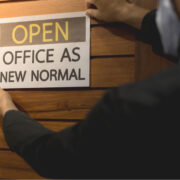Mark Coan outlines three ways you can sustainably scale your SME based on his own journey with Irish start-up Moneysherpa.
Back in April 2021, I wrote about how to use smart online strategies to generate customer demand for your SME.
To recap these were
- Find the Gap in the Market
- Find the Market in the Gap
- Market to the Gap you Found
But when you manage to get some customer traction, what happens next?
This is a challenge I faced with my own business Moneysherpa.ie recently.
Our active users online jumped from just 200 to over 5000 and our sales increased ten fold. Which left us struggling to meet the sudden surge in work.
A ‘high class’ problem to solve
Successfully generating demand was huge for us, it proved that customers actually wanted our services. This was our biggest worry starting up and therefore our number one objective for the first stage of our business plan.
But, we had deliberately avoided making any major capital investment in this first stage until we had actually proven customers wanted our service. So now had no teams or tech able to meet the demand we had just created.
This was a ‘High Class’ problem, much better to have demand and no capacity than capacity and no demand, but it was still a problem all the same.
Customers wouldn’t wait around for us to get our act together and losing momentum would kill off our growth trajectory.
We now had to scale sustainably to meet the demand and fast.
Scaling your SME sustainably
Luckily we didn’t have to go all the way back to square one. We had already planted a few seeds that we’re ready to sprout if and when we were successful in getting our first customers.
1. Scaling Tech
Fortunately, I’d spent a few months during the start of lock down nerding out on how to build a low cost online business that could scale easily. So we had already picked Software as a Service (SaaS) solutions that didn’t require more servers or expensive re-configuration.
But, behind the curtain we were still doing loads of stuff manually. As volumes ramped up sending individual emails to customers, manually booking appointments and running reconciliation reports in Excel etc.. simply became unsustainable.
We dove into automating the things that were causing the biggest headaches first. The key to tackling this quickly though turned out to be finding off the shelf solutions where we could.
As the saying goes “there’s an app for that”, a quick google would almost always throw up an app or a plug-in we could simply configure to fix our issue and quickly move onto the next thing.
3 tips for scaling your tech sustainably:
- Choose SaaS solutions whenever you can, what you might lose on cost you gain in focus and flexibility.
- Prioritise what customers actually see initially, you can build out the back end and automate things later when volumes demand it.
- Try to use off the shelf, low or no code solutions where you can to maximise the customer facing control you have over your platform and your response time.
2. Scaling Teams
Scaling our team was different though. Our new hires would play a huge role in shaping the culture of the company.
But, much more importantly, they were real people, dependent on us for their livelihood.
For these reasons, you can’t (or certainly you shouldn’t) approach the people side of your business like you might the disposable and infinitely configurable tech stack.
When it comes to people, both you and they have to make a real commitment.
This meant we had to make sure our new hires were right for the business and we were right for them.
I’ve learned painfully in past lives that cutting corners on recruitment only ends in tears on both sides.
3 tips for scaling your people sustainably:
- Work with a specialist recruitment agency. We used Savvi recruitment, a specialist fintech recruiter who knew our business and the market inside out.
- Use a multi step assessment process to get to know the candidate properly and allow them to get to know you. It’s proven that a once off interview is little better than picking candidates out of a hat.
- Use a multi task assessment process. Your hires will probably never be interviewed in their actual role, so set them tasks that allow them to get a real feel for the role they will actually be doing.
3. Scaling Investment
Finally, we needed to raise capital in a way that allowed us to fund our tech and team ambitious sustainably. For us, this meant keeping the control and flexibility an early stage startup needs.
Based on the amount of funding we needed, the long term costs and maintaining our independence we settled on the Local Enterprise Office (LEO) as our best funding source for this stage in our growth.
Sometimes the LEO can be overlooked in the race for early stage funding, but with no interest payments eating into your capital and no investors demanding immediate returns it can be a great solution for companies looking to grow.
We found our local business advisor super helpful and although the paperwork seemed formidable at first it’s very manageable if you put your mind to it. From initial contact to funding in place only took us a couple of months.
3 tips for getting the most out of your LEO:
- Reach out to your local Business Advisor early to understand what can and can’t be supported.
- Tackle the paperwork head on, put your head down and it can all be done in a couple of days.
- Build an open long term relationship with your local LEO team. Much of the funding is strategic and future funding can support further stages in your company’s growth.





